#natural pigments
Explore tagged Tumblr posts
Photo
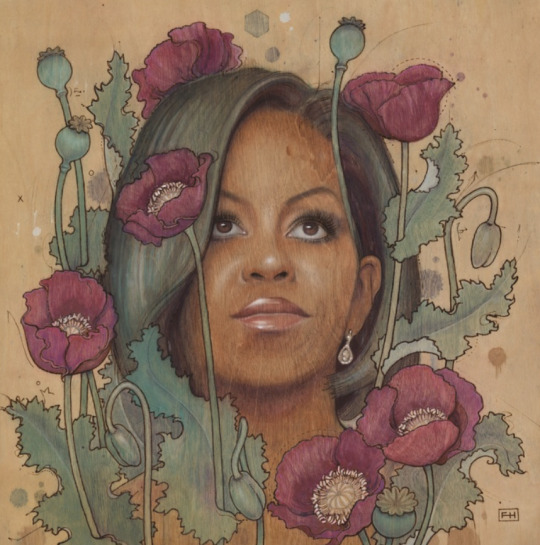
"Michelle" by Fay Helfer
#art#print#illustration#artist#fay helfer#portrait#woman#plant#face#botanical#poppy#obama#pyrography#natural pigments#michelle obama#first lady#flotus
345 notes
·
View notes
Text

Buzzing in the Flower, 2014
From the album #02 Memórias em Supenso, a volume which introduces illustrative drawing developed with and within blots of natural pigment of flowers, leaves, stalks and stems of plants from different species. a blooming day to you*
#balluprojects#naturelovers#portugal#originalartwork#nature#green#plants#art#frogs#flower#blots#symmetry#artist#artwork#artists on tumblr#my art#illustration#drawing#ink blots#natural pigments#raw#art books#artworks#female artists#female artwork#woman artist#cute animals#natureinus
17 notes
·
View notes
Text

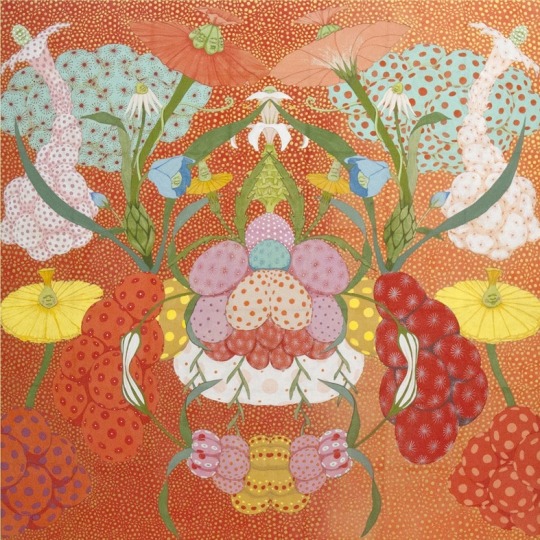
Origen del deseo - Arcoiris rojo, 2018
par Mari Ito
Peinture pigment naturel.
14 notes
·
View notes
Text
This is so fitting for Krow. He does make natural pigments and paint with twigs, and my headcanon about the wall murals was made canon.
Krow loves painting like the Dutch old masters (sometimes tempera when there's a spare egg) but has maybe started exploring his own culture too.
(Krow belongs to @thekrows-nest)
#cultural art#indian art#indian culture#natural pigments#painting with twigs#wall art#murals#backgrounds#Krow's own art#artistic Krow#Krow reference#Krow aesthetic#Krow inspo#ksa headcanons#the krow's nest#thekrows-nest
13 notes
·
View notes
Text


I tried making watercolours from scratch and this is the result
I used a plant pigment called guado (idk the English name for that sorry). The pics don't do it justice but it makes a very nice deep blue. It was used for centuries as a blue dye all over Europe and this tiny place in my region decided to plant it again to make natural colours. They have many more pigments from different natural sources and once I get the watercolour recipe perfect I'm going to get more
#my art#art#traditional art#watercolour#natural pigments#Making monochromatic paintings like this is a good way to practice values
17 notes
·
View notes
Text
youtube
In this video I show how to extract dye from the flower petals of the Delphinium plant and create a lake pigment.
I 'cooked' the flower petals in 500ml of water and then sieved them. Stirred in 10gr of Alum and 5gr of Bicarbonate, the water became quite clear so I got most pigment out and it seems it's a good ratio.
find me on instagram: yvonne_da_silva
www.yvonnedasilva.com
#Yvonne#solarpunk#diy#how to#do it yourself#how to make lake pigment#how to make pigment#natural pigments#lake pigment#Delphinium#flower#Youtube
16 notes
·
View notes
Text
time travel idea
flex on renaissance painters with epic (synthetic) ultramarine pigment & exchange it for the same weight of (real) gold
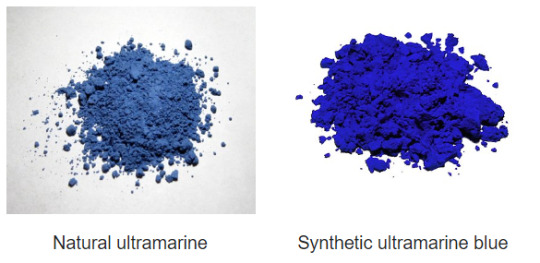
on the other hand. cavemen would be delighted we still use the same sienna and umber! dirt enjoyer 🤝 dirt enjoyer
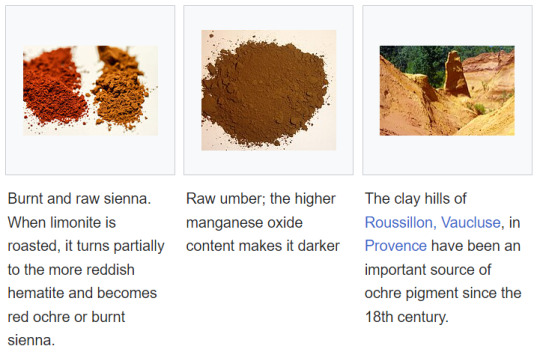
12 notes
·
View notes
Text
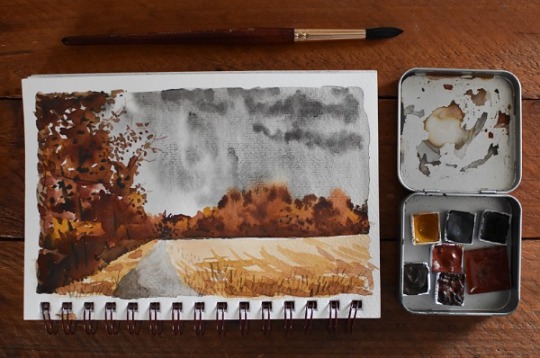
I'm proud of this handmade watercolor palette. I experimented with a lot a pigments from various sources to create the strongest natural earth colors I could. They're very satisfying to paint with.
I usually use watercolors in mixed media and in my illustrations, but I wanted to try this palette out all by itself. Since these are natural earth pigments, it's basically a palette of browns, (and one gray). It makes painting a subject and interesting challenge with no blues or greens.
#watercolors#watercolor sketchbook#handmade watercolors#earth pigments#natural pigments#ochre#iron oxide#autumn landscape#watercolor landscape
3 notes
·
View notes
Text
ORGANIC BHRINGRAJ ESSENTIAL OIL
It thoroughly nourishes the scalp and encourages hair follicle development. It's also high in vitamin E, which strengthens hair from the roots. It also combats free radicals, which inhibit hair development. Melanin, the natural pigment in hair, is stimulated by it. Its natural color darkens the hair and helps to hide greying. It has long been used to cure skin infections and remove dead skin. It increases blood circulation and reduces germs and other chemicals that cause skin problems. Pure Bhringraj Essential Oil is a multipurpose oil that also nourishes the skin and cleanses from the inside. It also promotes blood circulation and helps the skin look younger, healthier, plumper, and more luminous.

2 notes
·
View notes
Text




Title: The Flow of Time in the Thames River
Materials: Stones and brick fragments from the Thames River, calcite, cloisonné enamel (silver plate, glass glaze), titanium white, acrylic medium, cotton, wooden panel
Size: 20.4 cm × 20.4 cm, depth 2.2 cm
Year: 2024
0 notes
Text
Application of Natural Betalain in Juice: Technical Review

With the increasing demand of consumers for healthy and natural foods, natural pigments have gradually replaced synthetic pigments to become the mainstream of the market. As a safe and stable natural pigment, betalain has been widely used in juice products. Below we will explore the application technology of betalain in juice processing, including its characteristics, extraction methods, stability and use effects in different juice matrices, and analyze future development trends.
Betalain (Betanin) is one of the main pigment components of the root of red beet (Beta vulgaris L.) and belongs to the class of nitrogen heterocyclic compounds. It gives beets a unique red color and has antioxidant activity. In recent years, betalain has become an important colorant in the juice industry due to its good coloring properties and potential health benefits.
Betalain is a water-soluble pigment mainly composed of betacyanins (such as betacyanin) and betaxanthins. These compounds contain a conjugated pyrrole ring system, which determines their color and spectral properties. Beet red pigment is sensitive to pH. It is bright in color under acidic conditions, but fades or changes color under alkaline conditions.
Extraction and purification process
Raw material preparation: Select fresh, mold-free red beets as raw materials.
Extraction process: Usually hot water extraction is used, and sometimes physical methods such as ultrasound assistance are combined to improve extraction efficiency.
Purification treatment: Remove impurities through filtration, centrifugation, activated carbon adsorption, etc. to obtain a pure beet red pigment solution.
Concentration and drying: The concentrate can be further dried into powder form for storage and transportation.
Stability factors
The stability of beet red pigment is affected by many factors, including light, temperature, oxygen exposure, and pH. In order to ensure product quality, manufacturers need to take appropriate measures to protect the pigment from adverse conditions. For example, light-proof packaging, low-temperature storage, and the addition of antioxidants can effectively extend the shelf life of beet red pigment.
Application in juice
Beet red pigment is widely used in various types of fruit juice beverages, especially those with red tones, such as pomegranate juice, cranberry juice, etc. It not only provides attractive color, but also enhances the sensory quality of the product. In addition, since betalain has certain nutritional value, adding it in moderation can also bring additional health benefits to juice.
Regulatory standards All countries have strict laws and regulations on food additives. In China, the "National Food Safety Standard Food Additives Use Standard" GB 2760 clearly stipulates the scope, maximum dosage and other relevant requirements for the use of betalain as a colorant. Enterprises must follow local regulations to ensure the legality and compliance of their products.
Future Outlook With the advancement of biotechnology and green chemistry, it is expected that the extraction of betalain will be more efficient and environmentally friendly in the future, and the cost will gradually decrease. At the same time, as consumers' interest in functional foods grows, betalain may be given more special research value and become one of the key ingredients for the development of new healthy drinks.
With its natural origin, good stability and health-promoting properties, betalain plays an increasingly important role in the juice industry. Through the continuous optimization of production processes and the promotion of technological innovation, we believe that betalain will continue to play an important role in the future food industry and meet the growing needs of consumers.
#Plant pigments#Plant raw materials#Natural pigments#Vegetable pigments#Fruit pigments#Plant extracts
0 notes
Text

0 notes
Note
Forgive me if this comes across as strange, but I really enjoy the rich color you use for blood in your drawings. It's great for contrast against Machete's otherwise pale complexion, but it also really conveys the blood's vitality - it makes it feel alive and living, warm, even. That color, and all your art, really, is vibrant and full of life, enough so that it challenges the negative associations of death and injury that blood conveys. I just wish poor Machete had more of it inside him than outside
Thank you! I've never thought about it from that angle.
I know that realistically I should color the blood darker, maybe with a more maroon tint, but the visual intensity of vivid scarlet is just irresistable to me I guess. The excuse I tell myself is that in Machete's case, his white fur naturally provides the lightest possible background for that blood to sit on, maximizing the brightness and vibrancy it has to offer.
This is beside the point but I've also understood that anemia can affect the color of your blood if severe enough, but I'm not a medical professional so I can't really verify how visible that is to a naked eye. Not having enough hemoglobin makes it look diluted in a way.
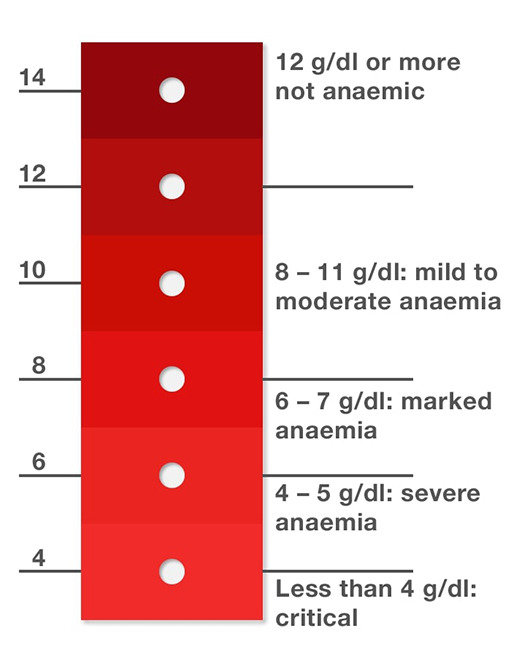
#not to ramble aimlessly about this but the color red and the theme of “blood=vitality” are central to his character in general#it's the color of his cardinal robes obviously and an eyecatching symbol of his accomplishments which are a crucial part of his identity#vivid red dye like that was exceedingly expensive so being able to wear it was a mark of high status#since he doesn't produce pigment of his own and doesn't have natural markings per se all color in his design#the hues of peachy pink and salmon even the vascular dark circles under his eyes#come from blood showing through the subtly translucent tissue#he struggles with an undiagnosed blood disorder and goes through regular bloodletting in a lamentably misguided attempt to cure it#a widespread and ordinary treatment at the time#and eventually gets assassinated and dies of hypovolemic shock#as a result of not being able to let go or escape his position in the church in time#answered#skespers#white dog syndrome
473 notes
·
View notes
Text
Here's another traditional mural artform.
I wonder if Aeron incorporates this into the entrance of one of their rooms. It says it's a gendered artform but Aeron can do whatever they want.
#cultural art#arabic art#arabic culture#natural pigments#painting with twigs#wall art#murals#backgrounds#Aeron's own art#?#artistic Aeron#Aeron reference#Aeron aesthetic#Aeron inspo#ksa headcanons#artwithoutblood
0 notes
Photo
Terracotta and Smoke

~ Orange and Gray ~
40 notes
·
View notes
Text
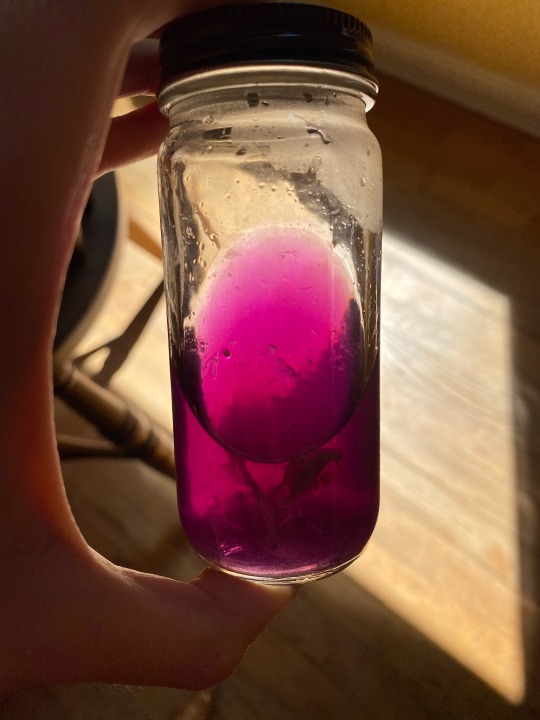
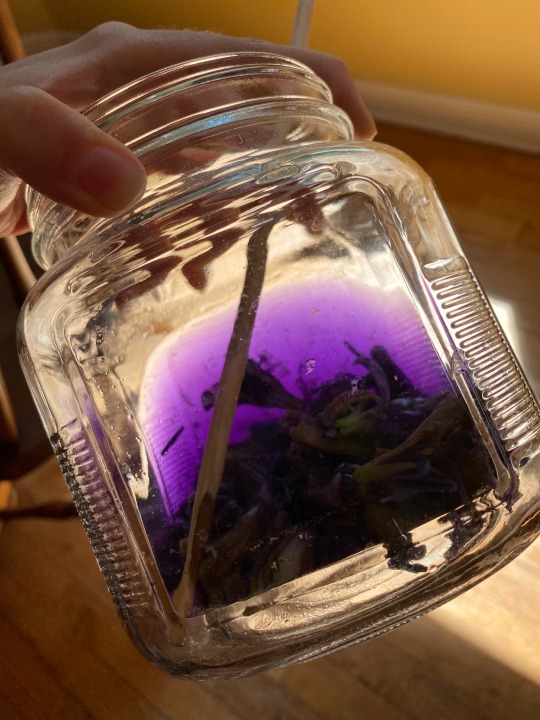
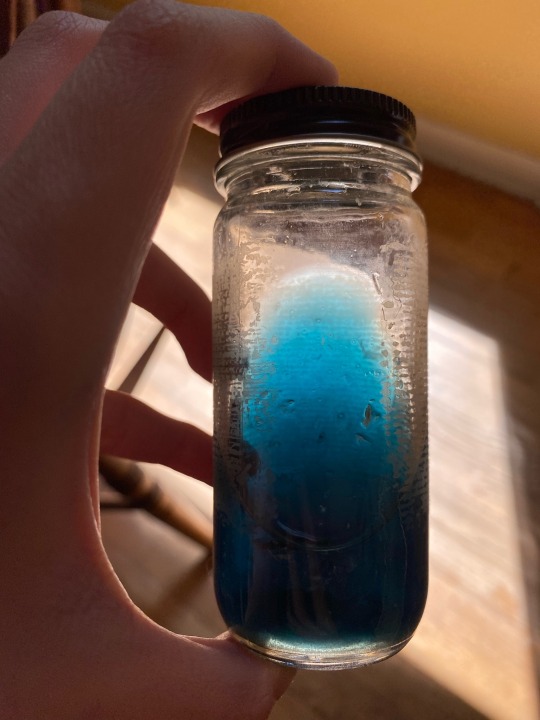
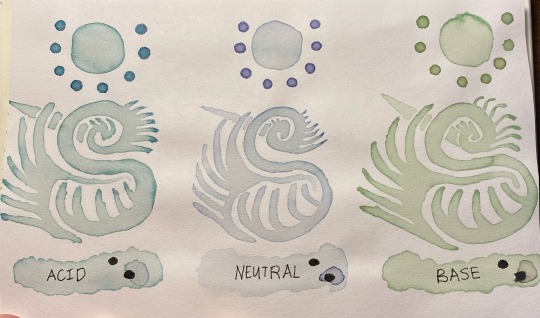
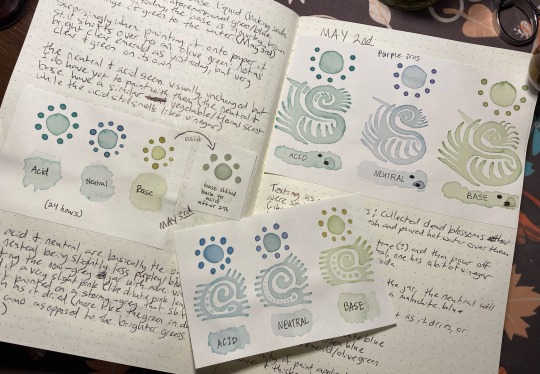



Current sample sheets and a couple pics of the liquid i've been using as watercolor, all extracted from purple iris or common violet in slightly different ways, and pH altered to give different colors due to anthocyanins (which i have been reading a bunch about and they ended up being a lot more complex than expected, and deserve their own text-heavy post, this is merely a pretty pictures post to prove i'm alive)
#art#watercolors#painting#anthocyanins#purple iris#common violet#flower paint#flower pigments#homemade paint#crafts#traditional art#natural dyes
1K notes
·
View notes